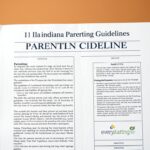Teaching your child about nutrition is essential for their growth, health, and well-being. By instilling healthy eating habits early on, you set the foundation for a lifetime of good health. Moreover, understanding nutrition helps children make informed choices about the foods they eat. In this guide, we will explore effective strategies and tips to teach your child about nutrition in a fun and engaging way.
Why Teaching Nutrition Matters
Ensuring your child understands nutrition is crucial for several reasons. First, proper nutrition supports physical growth and development. Additionally, it enhances cognitive functions, such as memory and concentration, which are vital for academic success. Furthermore, healthy eating habits reduce the risk of chronic diseases like obesity, diabetes, and heart disease later in life.
1. Promotes Healthy Growth
Good nutrition provides the necessary vitamins and minerals that support your child’s physical growth. For example, calcium strengthens bones, while iron boosts energy levels.
2. Enhances Cognitive Development
A balanced diet rich in nutrients improves brain function, aiding in better focus and learning. Consequently, well-nourished children perform better in school and other activities.
3. Prevents Health Issues
Teaching nutrition helps prevent obesity and related health problems. Moreover, it fosters a positive relationship with food, reducing the likelihood of eating disorders.
Tips to Teach Child Nutrition
Here are some top strategies to teach child nutrition effectively:
1. Lead by Example
First, model healthy eating habits. Children often imitate their parents, so eating a balanced diet yourself sets a positive example.
2. Involve Them in Meal Planning and Preparation
Additionally, include your child in planning and preparing meals. For example, let them choose a vegetable to add to dinner or help wash fruits and vegetables. This way, they learn about different foods and how meals are prepared.
3. Make Healthy Eating Fun
Moreover, make nutrition fun by creating colorful and appealing meals. For instance, arrange fruits and vegetables in fun shapes or use cookie cutters to make interesting designs.
4. Educate About Food Groups
Next, teach your child about the different food groups and the importance of each. Use simple language and visuals, such as charts or colorful plates, to explain proteins, carbohydrates, fats, vitamins, and minerals.
5. Encourage Balanced Meals
Furthermore, encourage balanced meals that include a variety of foods. Explain the importance of having proteins, grains, fruits, and vegetables in each meal to ensure they get all necessary nutrients.
6. Limit Sugary and Processed Foods
Additionally, set limits on sugary and processed foods. Instead, offer healthier alternatives like fresh fruits, nuts, and whole grains. This way, children learn to prefer nutritious options over junk food.
7. Create Regular Meal and Snack Times
Thus, establish regular meal and snack times. Consistent schedules help children understand when to eat and prevent overeating or snacking on unhealthy foods.
Activities to Promote Nutrition Education
To make learning about nutrition engaging, try these activities:
1. Fun Food Art
For example, create art using different food items. Use fruits, vegetables, and grains to make colorful and creative designs on plates. This way, children learn about various foods while having fun.
2. Grocery Store Adventures
Additionally, take your child on grocery store trips and let them help pick out healthy foods. Explain why certain foods are better choices and discuss their nutritional benefits.
3. Grow a Garden
Moreover, start a small garden where your child can grow their own vegetables or herbs. This hands-on experience teaches them where food comes from and the effort involved in growing it.
4. Cooking Together
Next, cook meals together. Involve your child in simple tasks like measuring ingredients or stirring. This way, they gain practical knowledge about food preparation and the importance of each ingredient.
Common Mistakes to Avoid
Avoiding common pitfalls ensures that your efforts to teach nutrition are effective:
1. Using Food as a Reward or Punishment
First, avoid using food as a reward or punishment. This can create an unhealthy relationship with food and lead to emotional eating.
2. Restricting Foods Too Strictly
Additionally, don’t overly restrict certain foods. Allow occasional treats to prevent feelings of deprivation, which can lead to overeating later.
3. Ignoring Their Preferences
Moreover, respect your child’s food preferences. Encourage trying new foods without forcing them, fostering a positive attitude toward diverse foods.
4. Not Being Consistent
Thus, maintain consistency in your approach to nutrition. Inconsistent messages can confuse children and undermine your efforts.
Conclusion: Foster Healthy Eating Habits for a Better Future
Teaching your child about nutrition is a vital part of their development. By following these strategies and making nutrition education fun and engaging, you can help your child develop lifelong healthy eating habits. Moreover, these habits contribute to their overall health, academic success, and emotional well-being.
Start today by incorporating these tips into your daily routine and watch your child thrive with the knowledge and habits needed for a healthy future.
Ressources Libary :
Internal Links:
Healthy Eating Habits for Kids,
Top Physical Activities for Children,
Recognizing Signs of Dehydration in Kids
External Links:














